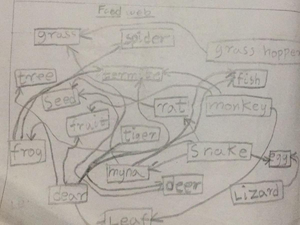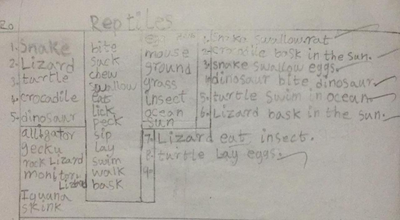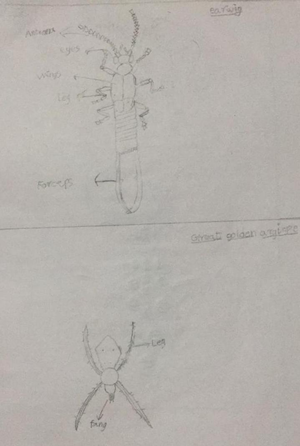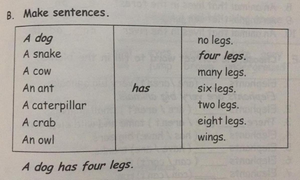Language and Ecology
Source: Marudam Farm School, Thiruvannamalai
Age group : 5th , 6th std
Objective: Using ecology (observing living and non living entities) to enhance language.
Lesson plan 1
Methodology
To introduce vocabulary in the area of diversity of living beings from prior knowledge.
Session 1
- Name some insects , birds, mammals, reptiles that you have seen around .
- Look at some of the pamphlets available on birds , butterflies, beetles , reptiles etc. Here is a link of some e-pamphletshttps://drive.google.com/folderview?id=15aR7viB7llEaiXH3jAiAEES4MQRxh_vv
- Discussion points :
Have you noticed small creatures such as dung beetles , small butterflies ,geckos etc?
What are the characteristics you saw ?
Session 2
Objective : To make children appreciate and enjoy the interconnectedness of nature.
- Go for a walk for half an hour .
- Write down some of the insects , birds, reptiles and mammals that you see ( bring awareness that rats and bats are also mammals )
- Make some small food chains (Here is a snapshot of one such made by a child )
Discussion points :
What do you observe in these food webs ?
Do you realize the roles of mushrooms ,ants and termites etc ?
Session 3
Objective : Sharing the learning with the group and building on it which encourages them to work towards more complicated concepts .
Children present simple food chains they have made .Teachers make a food web on the board .(This can be in a computer screen for online classes) Note : Children can also observe creatures inside the house eg. moths , spiders , cockroaches etc )
Discussion points :
What is it that which fascinates you all in the above exercise ?
Session 4
Objective : Using the vocabulary which came out of direct observations to build sentences .
- Use Sentence table to make sentences of what/how different animals do/eat. (One such sentence table homework for reptiles below)
- Use the food web to make your own sentences similar to sentence table.
Session 5
Objective : Applying language to express the experiences in nature.
- Take a small walk and children use the sentences written. Two such examples a child said “Akka! Look the white-throated kingfisher is jumping on the grass and eating a worm. ““Akka ! look at rat chewing the cloth which had peanuts.”
Extensions :
Make a list of locally found amphibians,insects , birds and reptiles bilingually .
Sentence table with past tense verbs can be introduced.
Lesson plan 2
Methodology : Using drawings for detailed study of entities.
Session 1:
- Draw an insect looking at any insect picture and label the parts .
- Collect insects and arachnids (dead ones ) near sun shades, under light source etc Look at insects , draw and label.(Make sure children observe and draw details like proboscis etc
- Repeat the same for many insects
Session 2 :
- Use sentence table to describe the parts of the insects and functions (Snapshot of a child's notes )
Session 3
Make labeled boxes of insects, arachnids , birds , plants etc. As children observe , children can add chits of names once they observe an insect , plant etc.
This will be the material for the next session. Based on their observation and collections , classification of insects/birds/plants can be introduced.
Session 4
Classify the chits collected as vertebrates /invertebrates , flowering /non flowering .
Discussion points :
What are the different ways of classification emerging out of this lesson?
Session 5
1. Choose an ecosystem eg. Pond life (Snapshot of the picture board )
2. Write under different classifications from the picture board.
3. If possible visit a nearby pond and connect to what ever one observes. Revisit classification , food chain .
Discussion points :
What are different kinds of similar habitats around you?



